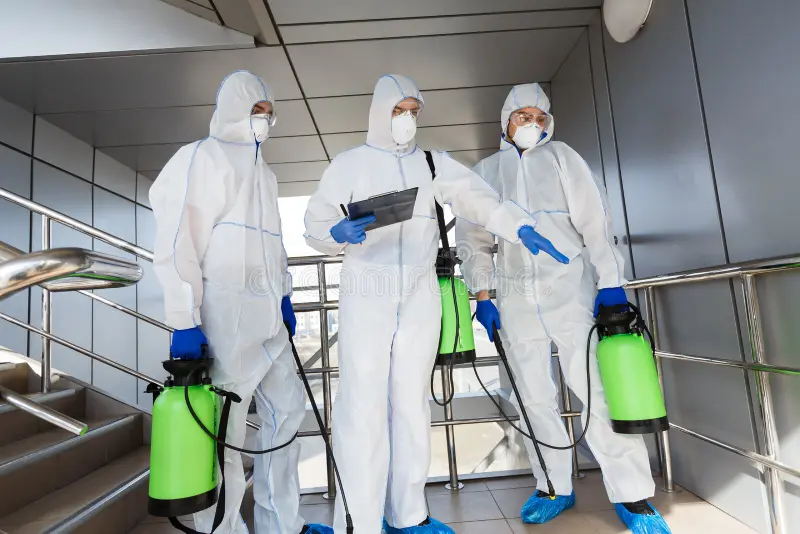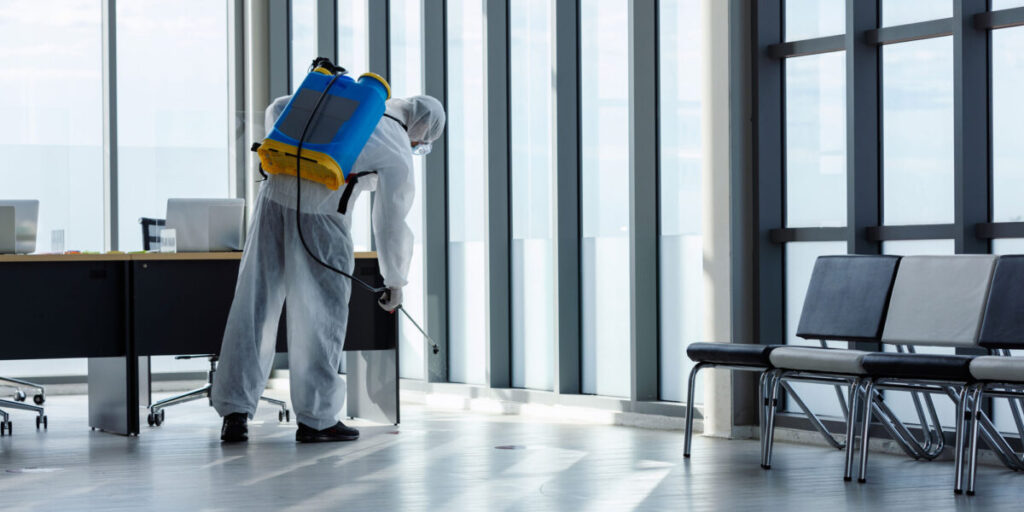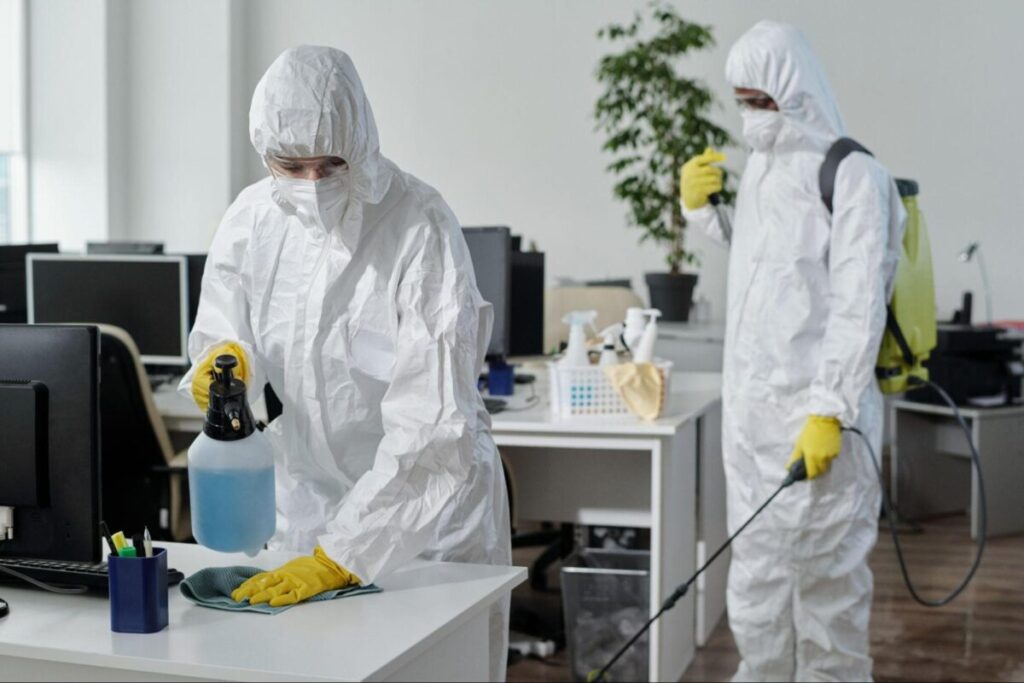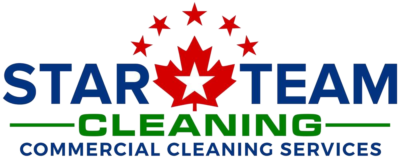The Science of Disinfection: Best Practices for Germ-Free Spaces

The Science of Disinfection: Best Practices for Germ-Free Spaces
In today’s health-conscious world, maintaining a germ-free environment is more crucial than ever. Effective disinfection goes beyond just cleaning; it’s about understanding and applying scientific principles to ensure that spaces are truly safe from harmful pathogens. For businesses in Ontario, implementing the best disinfection practices can protect employees, customers, and overall public health. In this guide, we’ll delve into the science behind disinfection and share actionable tips for achieving and maintaining germ-free spaces.
Understanding Disinfection: The Science Behind It
1. What is Disinfection?
Disinfection is the process of eliminating or reducing harmful microorganisms on surfaces and objects to a level considered safe by public health standards. Unlike cleaning, which removes dirt and debris, disinfection targets pathogens like bacteria, viruses, and fungi. Disinfection can be achieved through various methods, including chemical agents, heat, and UV light.
2. How Disinfection Works
Disinfection agents work by breaking down the cell walls of microorganisms or interfering with their metabolic processes. Chemical disinfectants, such as bleach and alcohol, are commonly used in commercial cleaning. These agents need to be in contact with the surface for a specified duration to effectively kill pathogens. Understanding the contact time and concentration levels of disinfectants is crucial for their effectiveness.

Best Practices for Effective Disinfection
1. Choose the Right Disinfectants
Selecting the appropriate disinfectant for your needs is fundamental. Look for products that are effective against a broad spectrum of pathogens and are suitable for the surfaces you need to clean. For instance, quaternary ammonium compounds (quats) are versatile and often used in commercial settings, while hydrogen peroxide and alcohol are also effective options. Always follow the manufacturer’s instructions for proper dilution and application.
2. Clean Before Disinfecting
Effective disinfection requires a clean surface. Dirt, grease, and organic matter can inhibit the action of disinfectants. Start by thoroughly cleaning surfaces with soap and water to remove any visible debris. Once cleaned, apply the disinfectant according to the recommended guidelines to ensure maximum efficacy.
3. Pay Attention to Contact Time
Contact time is the period a disinfectant must remain on a surface to be effective. Different disinfectants have varying contact times, ranging from 30 seconds to several minutes. Ensure that the disinfectant remains wet on the surface for the entire recommended time. This step is crucial to ensuring that all pathogens are effectively killed.
4. Use the Right Application Methods
Different surfaces may require different application methods. For high-touch areas like doorknobs, light switches, and handrails, use disinfectant wipes or sprays. For larger surfaces or floors, consider using mop solutions or automated cleaning machines. Ensure that the disinfectant reaches all areas, including crevices and corners.
5. Train Your Cleaning Staff
Proper training is essential for maintaining high standards of disinfection. Ensure that your cleaning staff understands the importance of using the correct disinfectants, following proper procedures, and adhering to safety protocols. Regular training sessions and refreshers can help maintain consistent disinfection practices. Alternatively, you can hire Star Team Cleaning best known cleaning company in GTA, Ontario, Canada

Advanced Disinfection Techniques
1. UV-C Light Technology
Ultraviolet (UV-C) light is a powerful tool in disinfection, especially in areas with high pathogen loads. UV-C light effectively inactivates microorganisms by damaging their DNA. This technology is often used in conjunction with traditional cleaning methods to enhance overall disinfection. However, UV-C disinfection requires proper equipment and safety precautions to be effective and safe.
2. Electrostatic Spraying
Electrostatic spraying is a modern technique that ensures even distribution of disinfectants over surfaces. This method uses an electrically charged spray to coat surfaces more thoroughly, reaching areas that may be missed with traditional spray methods. It’s particularly useful for large areas or high-touch surfaces.
Ensuring Safety and Compliance
1. Follow Health and Safety Regulations
Compliance with local health and safety regulations is essential for any disinfection program. In Ontario, businesses must adhere to guidelines set by public health authorities and occupational safety organizations. Regularly review these regulations and ensure that your disinfection practices meet or exceed the required standards.
2. Consider Green Cleaning Options
Sustainability is increasingly important in commercial cleaning. Opt for eco-friendly disinfectants that are effective but less harmful to the environment. Green cleaning products can reduce the impact on indoor air quality and promote a healthier workplace.
Monitoring and Evaluating Disinfection Practices
1. Conduct Regular Inspections
Regular inspections help ensure that disinfection practices are being followed correctly. Conduct routine checks to verify that cleaning staff are adhering to protocols and that surfaces are being disinfected effectively. Address any issues promptly to maintain high standards of cleanliness.
2. Seek Feedback and Adjust as Needed
Gather feedback from employees and clients about the cleanliness of your facility. Use this feedback to make necessary adjustments to your disinfection practices. Continuous improvement ensures that your facility remains safe and hygienic.
Conclusion
The science of disinfection is integral to maintaining a germ-free environment and safeguarding public health. By understanding the principles behind disinfection and implementing best practices, you can create a cleaner, safer space for everyone. From selecting the right disinfectants to employing advanced technologies and ensuring compliance, every step contributes to effective pathogen control. Prioritize disinfection in your cleaning routine to ensure a healthy and productive environment for your business in Ontario.

